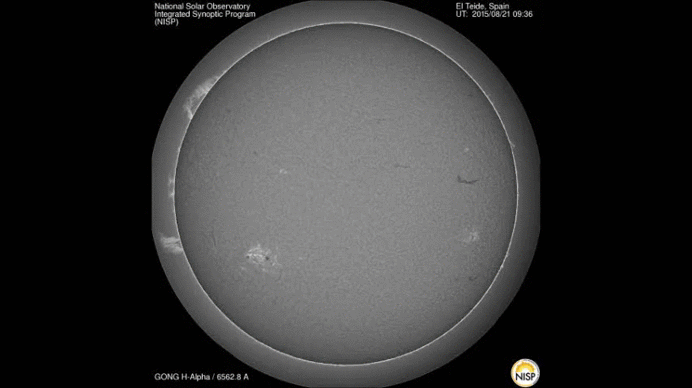NOAA 2403, an active region visible during the last 2 weeks of August, has been one of the largest and most complex sunspot groups so far this year. Its maximum surface area was 7 times that of the Earth, and its mixed magnetic polarities were the source of numerous small and moderate solar flares. No wonder that many astronomers took the time for a photoshoot of this marvellous sunspot group!

The impressive pictures above were taken by Jeffrey Carels from the Belgian Solar Section who imaged NOAA 2403 on 24 (top) and 28 August (bottom) using only a 10 cm refractor. The astonishing images below were acquired by renowned astrophotographer Leo Aerts who used a 14 cm Schmidt-Cassegrain with red filter. The images show the evolution of the group from a pile of small sunspots on 20 August, over a mature active region on 23 August, to an open structured bipolar group on 26 August. Using solar eclipse glasses, the group was visible with the naked (unaided) eye during this period (23-26 August).


Leo Aerts also took this amazing picture of NOAA 2403's leading portion, showing very fine details in the umbra and penumbra of the spots, as well as the solar granulation (the polygonal cells outside the sunspots).

NOAA 2403 produced no less than 85 C-class and 11 M-class flares, making it one of the most flare-active regions of the current solar cycle. A small 4 cm H-alpha telescope shows the inner solar atmosphere and provides already a good view on the eruptive processes on the solar surface. One of the M-class flares on 21 August (M1.4 peaking at 09:48UT) was imaged using just such a small telescope and a handheld GSM. The image to the left shows the undisturbed region at 08:41UT, where the image to the right shows the flare at its maximum at 09:48UT. The flare is clearly located to the west (left in pictures below) of NOAA 2403's leading portion. A movie from NSO's GONG H-alpha network can be found underneath (09:36-10:46UT).


A jaw-dropping high-resolution H-alpha movie of the aftermath of the M1.4 flare was made by the Dutch astrophotographer codenamed "Neo", using a 15 cm refractor telescope modified for H-alpha viewing. The clip lasts 2 seconds and covers 22 minutes of observation time. It can be admired at this astroforum thread.
 |
 |





